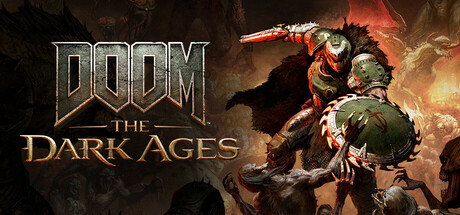coyotino [he/him]
i should be gripping rat
- 275 Posts
- 873 Comments

 2·14 hours ago
2·14 hours agoit’s very comfy here in my bubble and i have no problems with that

 11·1 day ago
11·1 day agoin souls, the 2-handed longswords that are a realistic size are realistically fast when you wield them in 2-handed mode. the ones that are slow are more anime sized.
baseball bat was not the best metaphor, i went with that because most people (including souls fans) haven’t swung an actual sword in their lives.

 24·1 day ago
24·1 day agohave you swung a melee weapon before in real life, like maybe a baseball bat? Does swinging the bat happen instantaneously, or do you have to wind up the swing for momentum? Would a bigger, heavier bat be faster or slower to swing?
Souls games have slow melee attacks compared to something like Devil May Cry, but the speed is intended to be more realistic compared to those kinds of speedy action games. Just apply real life logic to it, and it should make more sense. If the weapon you are using is too slow for you, find a smaller, lighter one that would be easier to swing in real life. If starting out as a regular dude and then becoming more powerful is not appealing to you, or if realistic fights are not exciting to you, then maybe the Souls games just aren’t your bag.

 1·2 days ago
1·2 days agoexactly! it’s a way to own a complete copy on disc, independent from the servers. I know there are other companies offering that specific thing, but more players in the space is a good thing imo

 8·2 days ago
8·2 days agoBig article, but a great read! Some key excerpts:
This isn’t simply the norm of a digital world. It’s unique to AI, and a marked departure from Big Tech’s electricity appetite in the recent past. From 2005 to 2017, the amount of electricity going to data centers remained quite flat thanks to increases in efficiency, despite the construction of armies of new data centers to serve the rise of cloud-based online services, from Facebook to Netflix. In 2017, AI began to change everything. Data centers started getting built with energy-intensive hardware designed for AI, which led them to double their electricity consumption by 2023. The latest reports show that 4.4% of all the energy in the US now goes toward data centers. Given the direction AI is headed—more personalized, able to reason and solve complex problems on our behalf, and everywhere we look—it’s likely that our AI footprint today is the smallest it will ever be. According to new projections published by Lawrence Berkeley National Laboratory in December, by 2028 more than half of the electricity going to data centers will be used for AI. At that point, AI alone could consume as much electricity annually as 22% of all US households.
Let’s say you’re running a marathon as a charity runner and organizing a fundraiser to support your cause. You ask an AI model 15 questions about the best way to fundraise. Then you make 10 attempts at an image for your flyer before you get one you are happy with, and three attempts at a five-second video to post on Instagram. You’d use about 2.9 kilowatt-hours of electricity—enough to ride over 100 miles on an e-bike (or around 10 miles in the average electric vehicle) or run the microwave for over three and a half hours.
One can do some very rough math to estimate the energy impact. In February the AI research firm Epoch AI published an estimate of how much energy is used for a single ChatGPT query—an estimate that, as discussed, makes lots of assumptions that can’t be verified. Still, they calculated about 0.3 watt-hours, or 1,080 joules, per message. This falls in between our estimates for the smallest and largest Meta Llama models (and experts we consulted say that if anything, the real number is likely higher, not lower).
One billion of these every day for a year would mean over 109 gigawatt-hours of electricity, enough to power 10,400 US homes for a year. If we add images and imagine that generating each one requires as much energy as it does with our high-quality image models, it’d mean an additional 35 gigawatt-hours, enough to power another 3,300 homes for a year. This is on top of the energy demands of OpenAI’s other products, like video generators, and that for all the other AI companies and startups.
But here’s the problem: These estimates don’t capture the near future of how we’ll use AI. In that future, we won’t simply ping AI models with a question or two throughout the day, or have them generate a photo. Instead, leading labs are racing us toward a world where AI “agents” perform tasks for us without our supervising their every move. We will speak to models in voice mode, chat with companions for 2 hours a day, and point our phone cameras at our surroundings in video mode. We will give complex tasks to so-called “reasoning models” that work through tasks logically but have been found to require 43 times more energy for simple problems, or “deep research” models that spend hours creating reports for us. We will have AI models that are “personalized” by training on our data and preferences.
By 2028, the researchers estimate, the power going to AI-specific purposes will rise to between 165 and 326 terawatt-hours per year. That’s more than all electricity currently used by US data centers for all purposes; it’s enough to power 22% of US households each year. That could generate the same emissions as driving over 300 billion miles—over 1,600 round trips to the sun from Earth.

 4·3 days ago
4·3 days agoyou have a mental fortitude i cannot imagine. getting all those sewer-tier jokes pure, uncut, while holding down L2+R2 for 30 hours…I thought they banned that sort of thing in the Geneva Conventions

 41·3 days ago
41·3 days agoJust putting this out there: wouldn’t a multiplayer-focused game like Borderlands be relatively shielded from the lads out on the high seas? Sure fitgirl could hook you up for a single-player campaign, but who tf wants to play Borderlands solo?

 11·6 days ago
11·6 days ago“as long as people spend less money on games overall things will be fine!” Easy to say when you’re retired from the industry. I don’t think anyone in the industry would appreciate the implications of that…

 4·6 days ago
4·6 days agoThat is a fair point! That could be neat. Still not worth the environmental cost of using this technology, but interesting in a vacuum!

 4·7 days ago
4·7 days agodon’t worry, the AI can do that badly too!

 10·7 days ago
10·7 days agodevelopers have been working on this, but it doesn’t scale to games in the way you might think. For one, games have to communicate with data centers to process LLMs, so we will still have to deal with the lag of data transmission and processing. The other problem is that, in general, the AI are not very good. ChatGPT has all the hype because it is very convincing, but it does not actually know what it is talking about. Go ask ChatGPT to add up 5 multi-digit numbers and watch it fail at a task that your pocket calculator can complete in seconds. All these LLMs are doing is taking your input and spitting out a response that sounds correct based on how people usually respond to that input. In the context of a game, this means that any dynamic conversation you might have with an NPC would go flying off the rails in ways that would make a game feel broken and/or unfinished. Go watch the video in the linked article and make your own judgment.

 2·7 days ago
2·7 days agomakes sense. Epic immediately started offering in-app store software, so other companies could implement Fortnite-like stores into their own apps in a way that bypasses Apple’s payment system. It’s plain to see that Apple will do everything they can to stop that from happening. Services are about 25% of Apple’s revenue, which means that if they lose most of that revenue stream, their profit margin is almost cut in half. Combine that with how much tariffs are going to cut into iPhone revenue, and now this is more like an existential fight for Apple.

 2·9 days ago
2·9 days agowell id is now owned by Microsoft, and Microsoft is a BDS priority target so honestly if you decide to sail the high seas for this one, I won’t tell.

 24·9 days ago
24·9 days agointeresting to discover that MAGA does have a line for what they are willing to accept. Up until this moment I truly thought he could say or do whatever he wants and MAGA would drink it down like castor oil. Also fascinating that Trump has brushed up against this line already, not even 6 months into this term. We are in for a long 4+ years…

 5·10 days ago
5·10 days agowell, that’s a big bummer. AbleGamers has clearly done an outsized amount of advocacy work in the industry, and it’s awesome that we have stuff like the Xbox Adaptive Controller. Way less cool if the entire org was rotten at the top. Some of these incidents make me wonder if Barlet even cared all that much about disabled folks.
The industry still struggles with basic accessibility options in a lot of games - many studios will implement a wide array of accessibility options, but they do the absolute bare minimum for each disability, such that it looks like they are being inclusive to the gamers that don’t actually use those options. Colorblind options are a common culprit. Basic color filters over the entire screen are insufficient for most colorblind gamers.
One wonders if Able Gamers would be tackling issues like this more directly if their founder had his eye on the ball (instead of having his eye on his coworkers’ breasts)

 18·10 days ago
18·10 days agothe right detains people for simply holding different political views and talking about them online. Meanwhile, the Biden admin couldn’t even be bothered to file the papers for Trump’s actual treason against the United States.

 2·10 days ago
2·10 days agoi think it makes sense to be skeptical. they’ve shown one game for it that seems neat but not revolutionary. I think this is just a case of “the switch 2 has to do something that the switch can’t do, besides running prettier games.”

 1·10 days ago
1·10 days agotbh it seems okay except i’m not sure where the ring and pinky fingers are supposed to rest. The dual-mouse possibilities are very intriguing, but i remain cautiously optimistic. this vid didn’t change my feelings one way or the other.

 4·10 days ago
4·10 days agoEvery Shotcut update is a win for the world. Shotcut is already perfect for small-scale video projects that don’t require all the bells and whistles. Every update brings it closer to feature parity with the Premieres and Vegases of the world.


















right there with you. and there are SO MANY levers they could pull under the hood to tweak the difficulty without fundamentally changing the fights. Adjusting stuff like poise, estus flasks, flask consumption time, etc could all make the game easier for folks without changing the fights themselves too much.